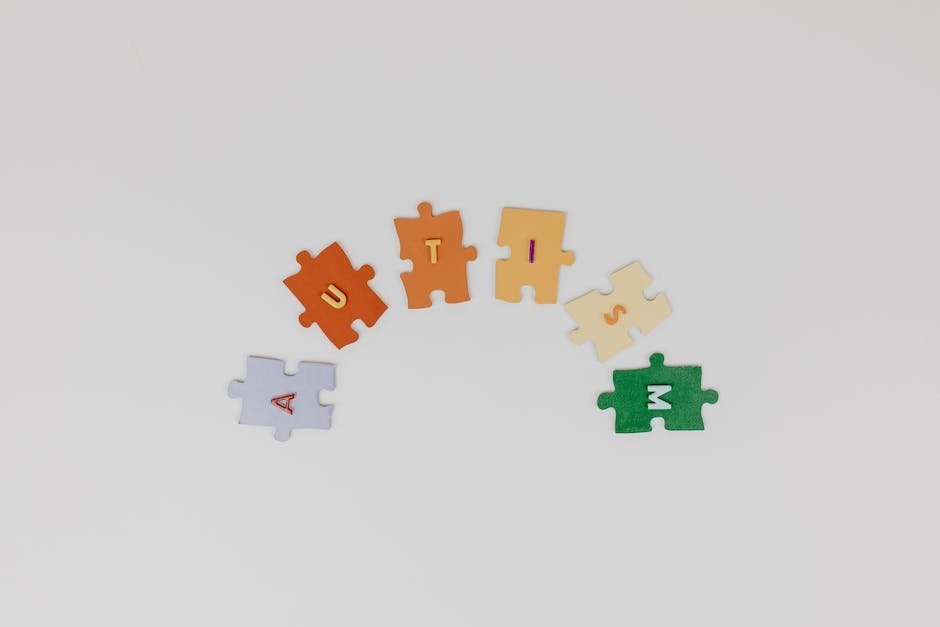
In the world where diversity and exceptionality are beginning to be embraced and appreciated, understanding autism is becoming a critical part of collective knowledge. Often due to misinformation or lack of awareness, autism is misconstrued by many. This piece strives to illuminate the reality of autism, exploring its intricacies ranging from its fundamentals, manifestations, and implications. Furthermore, it aims to unwrap the various treatments and therapies that may support children with autism and enrich their lives. The purpose is not just to understand autism but also to delve into the complexity of raising a child with autism – a journey that encompasses establishing effective routines, managing emotional crises, and promoting social interaction and education.
Understanding Autism
Understanding Autism: Its Impact on Children and Families
Every child is a universe, with their own unique quirks and qualities. However, for some, these differences are signs of an intriguing and baffling world of Autism Spectrum Disorder (ASD), a complex, multifaceted developmental condition. As one delves into the subject matter, it becomes crucial to fully understand what Autism is and how it affects children, thereby empowering parents and caregivers to be the loving, reassuring compass guiding these bright stars to their potential.
Autism spectrum disorder can bring up a flurry of emotions and questions for parents. It encompasses a broad range of conditions characterized by challenges associated with social skills, repetitive behaviors, speech, and nonverbal communication. It’s called a “spectrum” condition because of the wide variation in the type and severity of symptoms individuals display.
Children with Autism perceive and interact with the world differently from their peers. Although it’s a unique experience for every child, some common traits appear in different degrees. These may include trouble with social interactions, a tendency towards repetitive behaviors, and challenges in conventional communication.
It’s important to remember that every child on the spectrum possesses their own set of strengths and challenges. Some might have incredible art or mathematical skills, others may shine in computer programming or show heightened sensory sensitivity, which can manifest as both a strength and a challenge. Contrary to popular belief, children on the spectrum do form attachments to their loved ones, and their individuality shouldn’t be shadowed by their diagnosis.
Recognizing ASD at an early age is an essential part of ensuring that children receive the right support as they grow. Typical signs to look out for include little to no eye contact, delayed language development, and difficulty understanding other’s emotions and feelings. If a parent or caregiver perceives these signs, or if something intuitively feels “off,” these concerns should never be ignored. Consultation with a pediatrician or a specialist can often provide clarity.
Children on the autism spectrum see the world from a unique viewpoint, and this can both enrich their families and present daily challenges. Schedules and routines provide comfort for children with autism, helping them navigate their environment more easily. Family gatherings, social outings, or other activities that might disrupt this routine may be troubling for a child with ASD. Understanding their need for predictability and respect for their space can make daily life more manageable and enjoyable for everyone in the family.
While the journey with autism can sometimes seem overwhelming, it is never one that parents or caregivers have to face alone. With a loving and supportive community, coupled with professional guidance, families can navigate their way to provide an enriching life filled with love, joy, and immense opportunities for their child on the spectrum. Schools and organizations specialize in supporting these resilient children, utilizing strategies aimed at enhancing their exceptional talents while assisting them in their challenges.
Understanding Autism and realizing how it affects children pave the path for understanding, acceptance, and support. Remember, these children are just like other stars in the galaxy, shining brightly in their own magnificent way. Embrace their unique light, and help them twinkle even more brilliantly through love, patience, and consistent guidance.

Exploring Therapies and Treatments
Unveiling Promising Therapies and Treatments for Children with Autism
There is no denying that raising a child with Autism Spectrum Disorder (ASD) can be challenging. In addition to understanding and acknowledging the unique world views of these extraordinary children, the paramount importance of early intervention is crystal clear. But, how do we navigate the wide spectrum of therapies and treatments available? Here’s a comprehensive look at some of the best options out there.
- Occupational Therapy:
- Speech and Language Therapy:
- Social Skills Training:
- Applied Behavioral Analysis (ABA):
- Cognitive Behavioral Therapy (CBT):
- Floor Time Approach:
- Specialized schooling:
- Medications:
It’s not just about jobs and career paths. Occupational Therapy (OT) is pivotal in helping children with ASD refine their motor, cognitive, sensory processing, communication, and play skills. The ultimate goal here is to improve the child’s ability to participate in daily activities independently. So, whether it’s gripping a pencil correctly or tying shoelaces, OT matters.
Communication serves as the bedrock for our interactions. Children with ASD might require reinforced learning to communicate effectively. Speech and Language Therapy caters to this need, honing the child’s ability to express, comprehend, and use verbal and non-verbal language.
While communication courses the pathway, social interaction forms the destination. Children diagnosed with ASD often face hurdles in understanding social cues. Social Skills Training, hence, focuses on teaching them what can’t be picked up through simple observation like maintaining eye contact, taking turns while talking, and using appropriate facial expressions.
Noted as gold-standard in autism therapy, ABA emphasizes on using positive reinforcement to improve behaviors, including those of academic, social, communication and daily living nature. It is personalized to meet a child’s needs and monitored closely for effectiveness.
Feeling anxious or overwhelmed isn’t exclusive to adults. Children with ASD, too, experience such emotions. Here’s where CBT offers relief. It aims to identify and revise negative thought patterns and replace them with positive, constructive perspectives.
Highlighting the emotional and relational development, the Floor Time Approach encourages caregivers to engage with the child at their level – literally and figuratively. Through these interactions, the child learns to communicate emotions and navigate social relationships.
In some scenarios, specialized educational environments provide a tremendous boost to children with ASD. These offer structured, stimulating spaces where these unique learners can thrive, thanks to smaller class sizes, tailored teaching methods, and specialized training for educators.
At times, medication could be an accompaniment to therapy. Though there’s no ‘cure-all’ medication for autism, some can help manage related symptoms like high energy levels, inability to focus, anxiety, or depression.
While exploring these therapies and treatments, remember, every child’s needs and responses are different. Consulting with a team of experts, including physicians, therapists, and teachers, can provide insight on the best approach for your child. Ultimately, a loving, supportive environment coupled with the right therapy can allow your child to illuminate the world with their unique light.

Photo by yulia_dubyna on Unsplash
Navigating Daily Life and Routine
Every child thrives on structure and routine, however, for a kid with Autism Spectrum Disorder (ASD), these guidelines are not just beneficial, they’re vital. Crafting a daily structure helps these remarkable children manage their stress and anxiety, thereby developing better coping and social skills. Here’s how routines and various treatment approaches can make an extraordinary difference in the life of an autistic child.
First, establishing consistent daily routines evolves a sense of security and predictability among these children. This can be as trivial as a regular bedtime or a fixed meal plan; the point is to reduce the number of surprises they encounter. Routine provides an autistic child with a sense of control over their surroundings, consequently reducing outbursts.
Another treatment is ‘Occupational Therapy’ (OT). Through OT, children learn basic self-care tasks such as brushing teeth, tying shoelaces, or using utensils. It equips them with essential life skills, provides a semblance of autonomy, and in the process, boosts their self-esteem.
Then there’s ‘Speech and Language Therapy’ which enhances an autistic child’s ability to communicate effectively. It tackles issues ranging from non-verbal communication to understanding and expressing emotions appropriately. Having a communication routine helps reduce frustration and develops better social interaction.
For autistic children struggling with social interactions, ‘Social Skills Training’ can be a game-changer. It often utilizes role-playing scenarios to help children understand and react suitably to social cues. Regular practice in safe and structured environments encourages more spontaneous and genuine interactions.
The ‘Applied Behavior Analysis’ (ABA) program, a discipline dedicated to understanding and improving human behavior, is popular for helping autistic children. It encourages positive behaviors and discourages negative ones, thereby assisting in the overall development of the child.
‘Cognitive Behavioral Therapy’ (CBT), on the other hand, targets problem-solving and emotional regulation. For older children and adolescents, learning how their thoughts can impact their feelings and behavior is a powerful tool.
Another method is the ‘Floor Time Approach.’ It promotes emotional and intellectual growth by meeting children at their respective developmental levels, consequently building the foundation of a healthier social interaction.
Specialized schooling, providing a customized education plan for autistic children, is another avenue to consider. These schools possess not just the knowledge but the empathy required to support the child’s unique educational needs.
Finally, medication should only be considered as a last resort and used under the vigilant eye of a healthcare provider. Note that all these routines are most effective when they’re consistent and predictable, reinforcing the need for structure in an autistic child’s life. It not only ensures a stable environment but significantly contributes to their confidence and independence.
Being a parent to a child with ASD involves a steep learning curve. However, embracing routines, therapies, and treatments don’t just give your child tools to navigate their world, they also bolster a sense of familiarity, control, and comfort to any unpredictable environment. Remember, love conquers all – and the strength of your continued support can move mountains behind your child’s progress.

Managing Emotional Stress and Crisis
“Managing Emotional Stress for Raising a Child with Autism: Insights and Approaches”
When navigating the journey of raising a child with Autism Spectrum Disorder (ASD), parents and caregivers can experience a wide spectrum of emotions. Tackling the potentially overwhelming stress and daunting crises involves learning about ASD, a receptive approach, exceptional patience, and the boundless love of a proud parent. This guide will help demystify some of the ways that these trying times can be managed fruitfully.
Dealing with emotional stress calls for an understanding of the unique dynamics that come along with ASD, enhancing one’s resilience, and adopting effective stress management techniques. Parents and caregivers should prioritize self-care by ensuring they are getting enough sleep, exercise, and nutrition, along with taking time for relaxation and mindfulness activities.
Communication is indeed vital. It is essential to maintain open lines of communication with family members, friends, and support networks. Involve them in your journey and don’t hold back on expressing feelings or asking for help. Everyone needs a break sometimes; using respite care services can be extremely beneficial.
Another huge stress reliever is learning to celebrate the small victories, as progress in a child with ASD can be incremental. These celebrations can go a long way in reminding parents of the progress being made and the hopeful journey ahead.
Handling crisis situations with a child on the ASD spectrum can often require unique approaches. A helpful strategy is developing a crisis management plan which includes calming techniques, emergency contacts, and possible triggers. When crises do occur, remember to remain calm and reassuring, keeping in mind that this is likely a frightening situation for the child as well.
Remember, with every challenging situation, there are also beautiful, unexpected moments of growth and joy. Journal them or share with your support networks; these experiences provide necessary encouragement and motivation.
Holistic therapies can prove to be beneficial tools on this journey. Music and art therapies are proven to facilitate expressions and communicate emotions effectively. Additionally, equine and pet therapies have shown remarkable development in motor skills and behavior stability in children with ASD.
Lastly, consider joining a support group for parents and caregivers of children with ASD. These groups offer a wealth of resources, shared experiences, advice, and, most importantly, connections to those who understand your unique struggles. The process of reaching out and connecting with others in similar situations can offer immense comfort and reassurance.
Though the challenges may seem overwhelming, remember: parents, you are not alone in this journey. By acknowledging and managing emotional stress, developing crisis strategies, and garnering support, you are creating the best possible environment and life for your child. Every day is a step closer to building a brighter, more understood, and accepted world for our children with ASD. And on this journey, don’t forget to celebrate each little gain, every smile, every heartwarming connection – it’s all progress.

Promoting Social Interaction and Education
Let’s explore further the strategies that can enhance social interaction and educational accomplishments in a child with Autism Spectrum Disorder (ASD). Having addressed the benefits of therapies and routines, let’s delve a bit deeper into the realm of family dynamics, holistic therapies, and the power of peer support.
A vital factor often overlooked when exploring strategies to help children with ASD is the family atmosphere. The emotional wellbeing of the parents, the dynamics between siblings, and the overall family functioning have a profound impact on the child’s progress with ASD. Therefore, acknowledging the unique dynamics of raising a child with ASD is crucial. This journey is indeed a challenging one that demands adaptability and resilience. That’s why developing effective stress management techniques becomes paramount not only for the child’s wellbeing but also for yours. Yoga, meditation, or a simple walk in the park can help release pent-up stress.
Another aspect that needs much emphasis is the powerful role of self-care. Prioritizing self-care through sleep, exercise, nutrition, relaxation, and mindfulness activities gives parents the energy and focus needed to provide the best for their child. As clichéd as it sounds, we can only give from what we have. A filled cup is required to pour forth effectively.
Open communication also plays an essential part in addressing the challenges associated with ASD. Keeping regular dialogues open with friends, family members, and your child’s healthcare providers ensures everyone is on the same page. Sharing your concerns and triumphs fosters better understanding and bonding, creating a strong support system.
For those days when you feel overwhelmed, remember that respite care services exist to offer relief. A well-deserved break can have a profoundly revitalizing effect on a weary soul. So, don’t hesitate to use these services in order to replenish your strength and maintain your sanity amidst so many responsibilities.
Celebrate the small victories in your child’s journey with ASD – every new word, every shared smile, every bite of a new food. These moments of progress will serve as fuel to keep moving forward.
Have a crisis management plan ready. ASD can sometimes bring about unpredictable situations. Knowing what to do during a crisis incident can make things easier, safer, and less stressful for everyone involved. Remember, remaining calm and reassuring will help your child feel secure and loved even in such situations.
Journaling your journey or sharing positive experiences can serve as encouragement and motivation not just for you, but for others navigating similar paths. This willingness to share and connect can profoundly impact someone else’s life as well.
This journey with ASD may also lead you to explore the world of holistic therapies. Music, art, equine, and pet therapies provide alternative outlets that can help your child find his/her unique voice.
Last but not least, joining a support group for parents and caregivers of children with ASD could be a game-changer. You are not alone in this journey. A community of individuals who truly understand your experiences can offer an invaluable wealth of resources, shared experiences, and connections. These relationships can provide strength, comfort, and practical tips to aid you on this special parenting journey.
Raising a child with ASD is indeed a journey like no other. But with understanding, resilience, and gathering the right support and strategies, it’s a journey that can be incredibly rewarding.
Raising a child with autism, much like any other parenting journey, teaches us about resilience, compassion, and limitless love. It is a narrative of challenges met with perseverance, and victories, large and small, celebrated with tears of joy. While the journey may be riddled with unique trials and tribulations, with the right support system, understanding, and tools, parents can create a meaningful and enriching life for their child with autism. But beyond that, they also contribute significantly to fostering a more inclusive society, a world that not only acknowledges diversity but embraces it. The way we navigate these pathways can exemplify a profound understanding of autism and illuminate the possibility of life lived fully, in all its beautiful variety.




